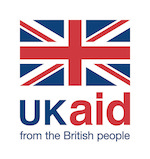This blog post is the fourth of a five-part blog series unpacking the findings from our latest report, ‘The digital lives of refugees: How displaced populations use mobile phones and what gets in the way.’
In humanitarian contexts, many people lack access to reliable energy sources. Refugee and IDP camps can be located in isolated areas, disconnected from the electricity grid. While humanitarian organisations are beginning to recognise power as a basic need, just like water and shelter, it is not always easily available. This blog presents key insights from M4H’s latest report on energy access and the opportunities presented by mobile-enabled solutions in Bidi Bidi settlement (Uganda), Kiziba camp (Rwanda) and urban settings in Jordan.
Mobile-enabled utilities can provide improved access to energy, water and sanitation services through mobile payments, machine-to-machine connectivity and through leveraging other mobile connectivity infrastructure. They can help people like Akaliza, who lives in Kiziba, find services that are both available in their area and tailored to their needs, like pay-as-you-go (PAYG) models.
Akaliza has a Tecno smartphone that she uses at home. In addition to using the mobile phone to connect with friends and family members outside the camp, Akaliza uses her phone to pay for a solar home system using mobile money. Her family used to rely on candlelight but, after one of the children accidentally started a fire, she decided a solar home system was safer. Today her family is secure and has reliable access to energy.
Solar energy use is high in Bidi Bidi and Kiziba
Refugees in both Bidi Bidi and Kiziba face significant barriers to accessing energy as the camps are located off the electricity grid. Solar use is high in both contexts; in Bidi Bidi, 78 per cent of households who have access to power are using solar lamps, in Kiziba, this figure stands at 65 per cent.
Graph: Types of Power Sources in Refugee Homes with Power

In Kiziba, even among those refugees without solar energy in their homes, there is a high level of brand awareness of solar products signalling a market opportunity for new solar providers. This market opportunity is also highlighted in M4H’s report on PAYG services in Kakuma Refugee Camp, Kenya.
Use of mobile is primarily for payments of utilities
In the research contexts, mobile technologies are most often used in the energy context to pay for services. Some use mobile money to pay for services on a PAYG basis – in Kiziba, 19 per cent of those with energy in their homes are using mobile money to pay for it. However, this number is much lower in Bidi Bidi, where many are reluctant to use mobile money due to taxes imposed by the government. Only 7 per cent of people with energy in their homes are using mobile money to pay for energy services.
Severe logistical, political and practical challenges remain that hinder the extension of the electricity grid to these more isolated areas meaning that this will be a challenge likely to persist for years to come. Meanwhile many customers have confidence in mobile providers and are able and willing to pay using mobile money when there are relevant solar solutions available.
Energy access for charging is a barrier to phone use
Charging and airtime is so expensive for women. Some women when we see that and for us it means hunger – we have to survive first, we have to reserve food for life, buying soap, those basic needs. We have to balance hunger with communication.
(Woman, Refugee, Bidi Bidi, Basic phone)
Given the importance of mobile connectivity to refugees, many are willing to make, what should be unnecessary, sacrifices in order to use their mobile phones. Respondents reported that charging their phones was their most pressing energy need but the availability and cost of charging, often at charging stations, can be a major barrier. These barriers have significant impact on mobile phone usage, focus group participants said they moderate use of their phones in order to save battery.
Emerging trends and Considerations
The research in the report suggests many possible applications for mobile-enabled utilities in humanitarian context. While cost and energy availability remain major barriers, alternative payment models, employment prospects and education about mobile money all present exciting opportunities. There are market opportunities that can and should be explored further by mobile network operators, energy service providers and humanitarian organisations to expand access to reliable energy sources for people like Akaliza. More details on this topic, along with the other four themes covered can be found in our full report.



